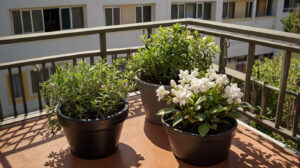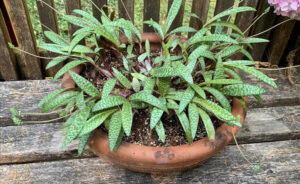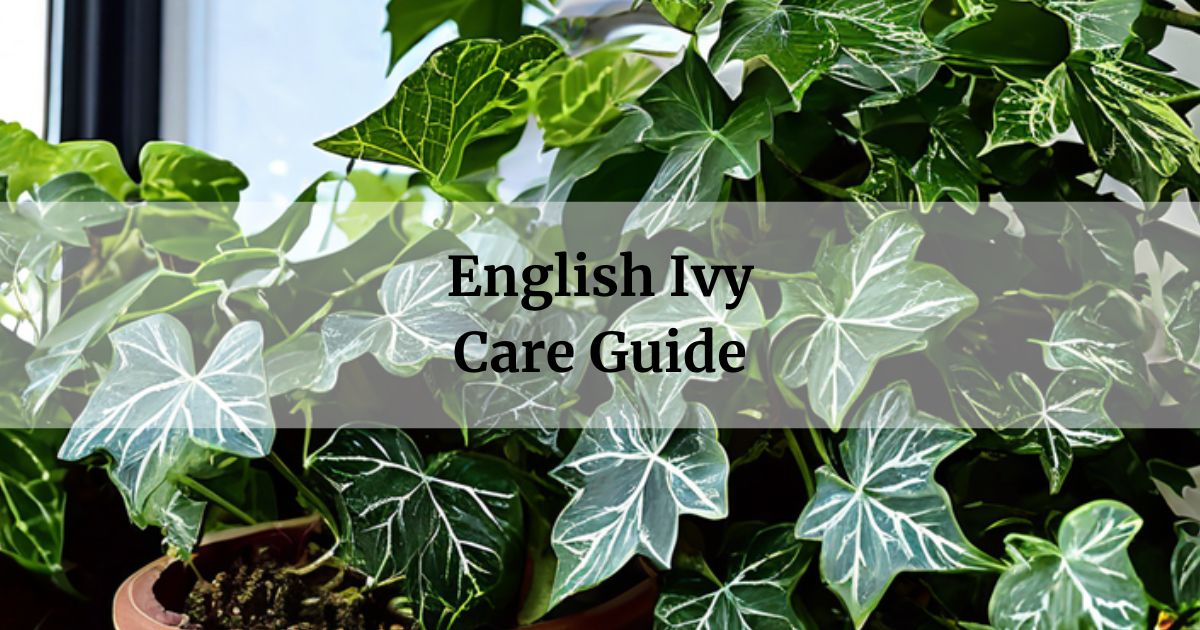
English Ivy (Hedera helix) is a popular evergreen houseplant known for its ability to climb virtually any surface. With its uniquely shaped leaves and waxy texture, English Ivy adds visual interest to any indoor space.
Key takeaways
- Easy to care for and suitable for beginners
- Thrives in low to medium light conditions
- Tolerates neglect but grows best with regular watering and fertilizing
- Propagates easily from stem cuttings
- Can climb walls or hang from pots and baskets
In this article
Appearance of English Ivy
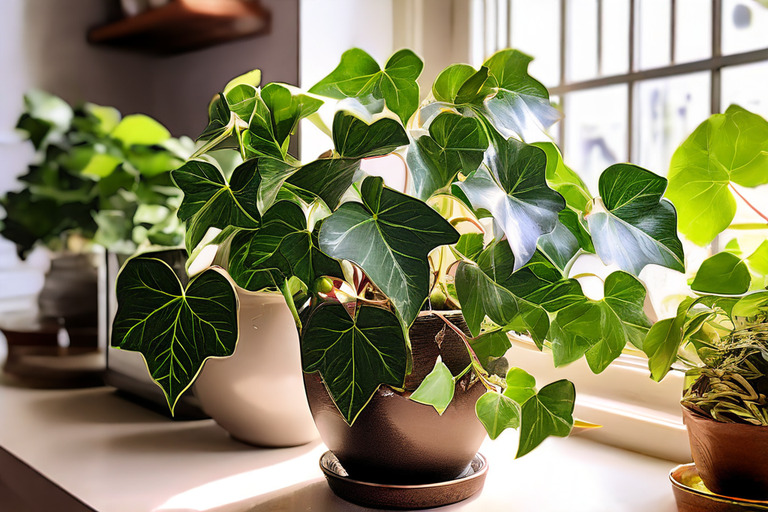
English Ivy has dark green ivy-shaped leaves that are shiny and variegated with creamy white edges. The leaves are alternately arranged on woody climbing stems. Although it does not flower indoors, it produces black berries outdoors. English Ivy is a versatile vine that works well trained up a moss pole or trellis, cascading from a hanging basket, or used as a trailing groundcover.
Light Requirements for English Ivy
Timelapse of my ivy springing back to life. 😮
byu/BigBenIsTicking inhouseplants
English Ivy thrives in low to medium light conditions and tolerates lower light levels better than many other houseplants. It does best in areas that receive bright, indirect sunlight for several hours per day such as eastern or western exposures.
In very low light conditions, growth may be sparse but the plant can still survive for long periods of time with minimal care. Direct sunlight can scorch the leaves, so protect plants that receive full sun.
| Light Conditions | Effect on English Ivy |
|---|---|
| Bright Indirect Light | Optimal growth and vibrant foliage |
| Low Light | Tolerates but growth is slow |
| Direct Sunlight | Leaves may scorch or burn |
Watering English Ivy
Water English Ivy when the top 1-2 inches of soil are dry to the touch, allowing the soil to partially dry out between waterings. During the active growing season (spring-summer), water every 7-10 days. Less frequent watering is needed in the winter when growth slows.
- Check soil moisture daily by sticking your finger in the top 1-2 inches of soil
- Water thoroughly whenever the top soil is dry
- Allow excess water to drain from the bottom of the pot
- Do not overwater as this can cause root rot
RELATED: 9 Indoor Plants that Purify the Air
Fertilizing English Ivy

American Plant Exchange English Ivy
Fertilize English Ivy every 4-6 weeks during the spring and summer growing season using a balanced liquid houseplant fertilizer.
- Dilute fertilizer to 1⁄2 the strength recommended on the label
- Apply fertilizer to dry soil and water thoroughly after application
- Skip fertilizing in fall and winter when the plant is semi-dormant
| Month | Recommended Dosage |
|---|---|
| Spring (March-May) | 1/2 strength every 4 weeks |
| Summer (June-Aug) | 1/2 strength every 4 weeks |
| Fall (Sept-Nov) | None |
| Winter (Dec-Feb) | None |
Potting English Ivy
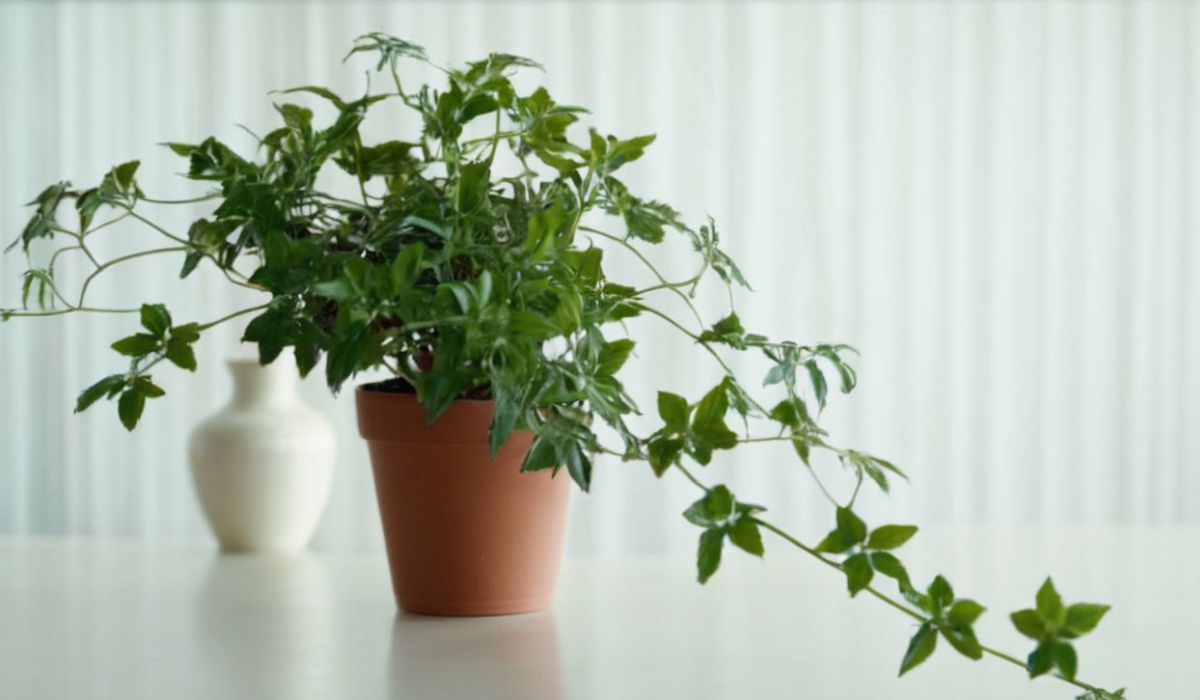
Repot English Ivy annually in early spring or whenever it becomes pot bound, indicated by roots growing out of the drainage holes. Use a well-draining potting mix specifically for houseplants and select a container with an inch or two of growth room.
Propagation of English Ivy
English Ivy propagates easily from 4-6 inch stem cuttings:
- Remove stem cuttings by pinching or cutting just below a node
- Remove lower leaves leaving top 2-3 sets of leaves intact
- Dip cut end in rooting hormone powder
- Place in moist potting mix and keep soil moist and warm
- New roots will form within 4-6 weeks
Growth and Development of English Ivy
English Ivy thrives in temperatures between 60-75°F. It can tolerate brief drops to 50°F but may drop leaves. High humidity levels around 50% promote healthy growth. Provide ample ventilation and protection from drafty conditions. English Ivy grows well year-round with seasonal changes indicating active growth in spring-summer and slowed growth in fall-winter.
In my experience, nurturing English ivy has been a rewarding journey. I found that providing consistent watering and indirect sunlight led to robust growth. Regular pruning encouraged denser foliage, enhancing the plant’s aesthetic appeal. Occasional fertilizing also had good results!
Managing Pests and Diseases for English Ivy
Common pests like spider mites and scale can damage English Ivy. Check leaves regularly and wipe down with a damp cloth if spots are seen. Isolate affected plants until infestation clears. Overwatering can lead to root rot, so allow soil to dry between waterings.
Frequently asked questions
Can English Ivy be grown outdoors?
Yes, in zones 5-9 it thrives outdoors when planted in partial shade. It makes a beautiful groundcover.
How do I get English Ivy to vine?
Train it to climb a moss pole, trellis, or wires for support by guiding new growth upwards. It will attach itself as it grows.
Can English Ivy be toxic to pets?
Yes, while not highly toxic, the berries can cause mild upset if ingested. Keep away from pets.
With its adaptability and low care requirements, English Ivy makes a wonderful option for any indoor gardener. Its striking variegated foliage adds lush greenery to any space.
Happy gardening!




